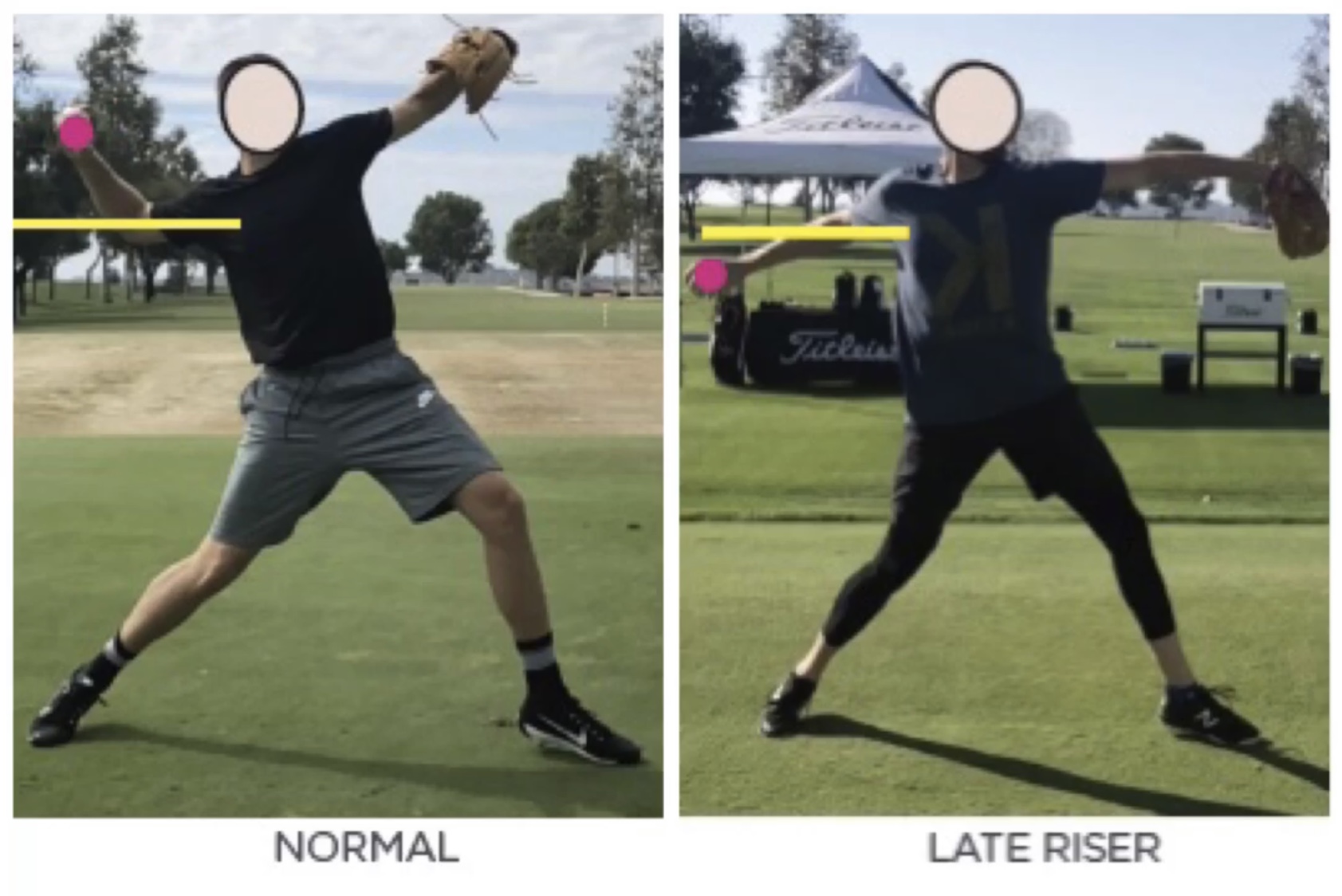Late Rise: Why it's a red flag for pitchers and what can cause it
Wed Jan 20, 2021 by OnBaseU
Late Rise is a pitching characteristic that refers to a pitcher whose throwing hand is still below their throwing elbow at foot touch. As Dr. Rose demonstrates in the video above, Late Rise can be identified by drawing a line parallel to the ground that bisects the pitcher's elbow when they are at foot touch. If the hand/ball is below the line, they are a Late Riser.
This relationship between the Late Rise pitching characteristic and torque on the elbow has also been observed by Dr. Glenn Fleisig of ASMI. He discussed it on our Q&A Webinar over the summer.

Dr. @GlennFleisig describing a pitching characteristic we call Late Rise.
— OnBaseU (@OnBaseU) July 30, 2020
🚩This is a red flag for coaches because the increased torque it causes at the elbow can be a contributor to UCL injuries.
Full webinar was sent to all who registered. Also on our site for OBU Certs pic.twitter.com/PyRyobkgQN
Though Late Rise can be related to physical limitations such as shoulder external rotation or spine disassociation, it's commonly observed in pitchers who also have a pitching characteristic called Short Stride. Most MLB pitchers stride at least 110% of their height. If they don't, we refer to it as a Short Stride.
We covered how we screen for physical limitations associated with Short Stride in a past article, but the important takeaway here is that technical inefficiencies are usually multifactorial. One of the most consistent themes of our Certification curriculum is encouraging coaches, S&C and medical professionals need to look beyond the site of dysfunction or inefficiency to find the cause of dysfunction or inefficiency. Assess, don't guess.